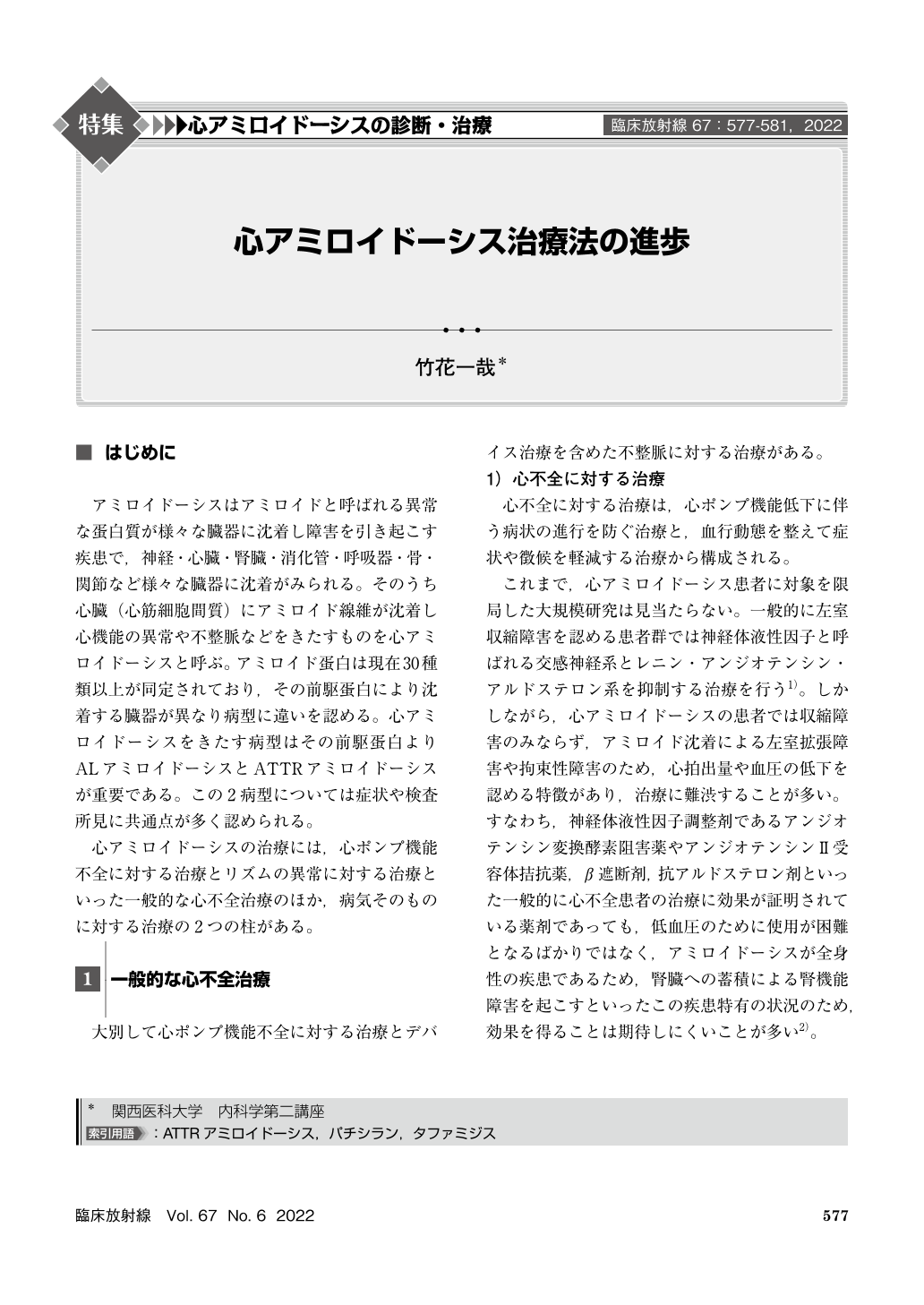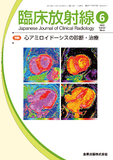Japanese
English
- 有料閲覧
- Abstract 文献概要
- 1ページ目 Look Inside
- 参考文献 Reference
アミロイドーシスはアミロイドと呼ばれる異常な蛋白質が様々な臓器に沈着し障害を引き起こす疾患で,神経・心臓・腎臓・消化管・呼吸器・骨・関節など様々な臓器に沈着がみられる。そのうち心臓(心筋細胞間質)にアミロイド線維が沈着し心機能の異常や不整脈などをきたすものを心アミロイドーシスと呼ぶ。アミロイド蛋白は現在30種類以上が同定されており,その前駆蛋白により沈着する臓器が異なり病型に違いを認める。心アミロイドーシスをきたす病型はその前駆蛋白よりALアミロイドーシスとATTRアミロイドーシスが重要である。この2病型については症状や検査所見に共通点が多く認められる。
Therapy for cardiac amyloidosis has been limited to treatment of generalized heart failure and arrhythmias. In recent years, drugs have been developed to inhibit amyloid deposition in the heart. One is a drug that reduces the production of free light chains, which is the source of amyloid, and the other is a drug that can stabilize transthyretin(TTR). In 2019, the oral TTR stabilizer Tafamidis, which has shown efficacy in patients with transthyretin-type cardiac amyloidosis(ATTRwt- or ATTRv-), was approved in Japan. The efficacy of this drug, however, is limited in the NYHA class III patient group, suggesting the importance of early diagnosis and treatment.

Copyright © 2022, KANEHARA SHUPPAN Co.LTD. All rights reserved.


